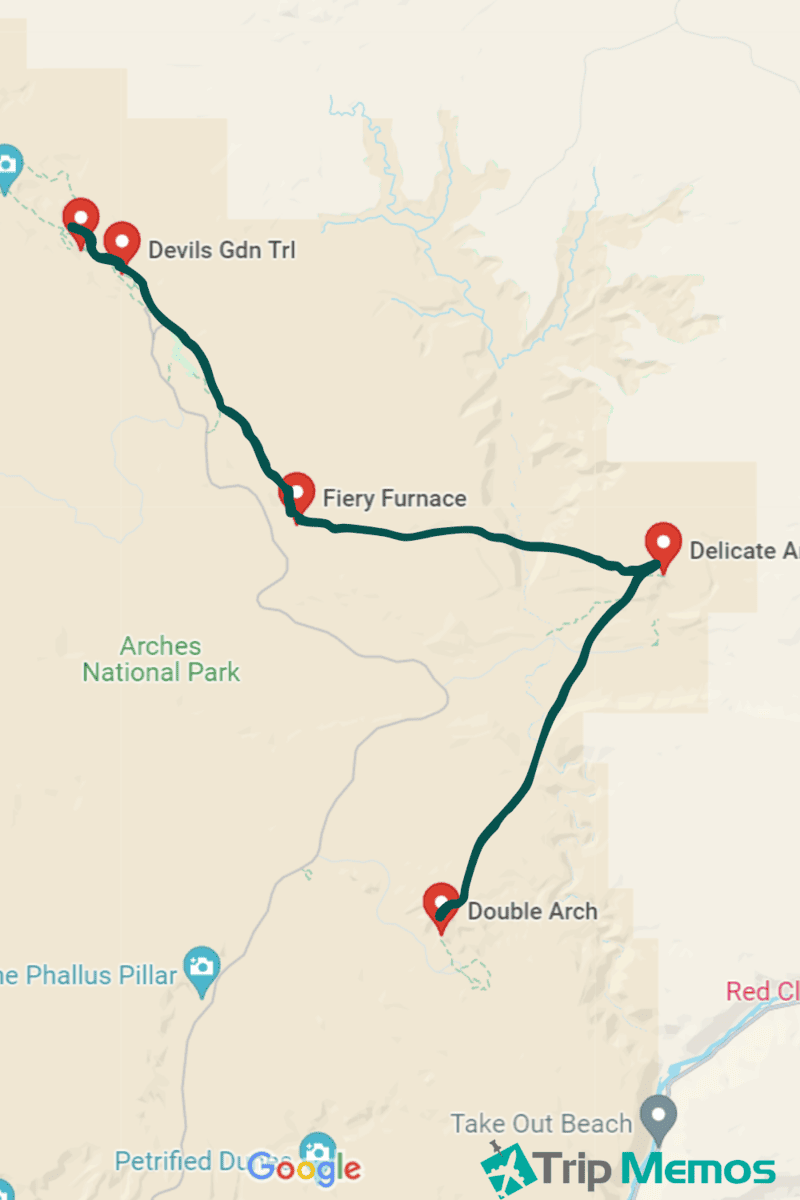Ever seen an arch made of rock towering above you? Welcome to Arches National Park — a land of over 2,000 natural stone arches carved by erosion over millennia.
See the world-famous Delicate Arch and the rest of this Utah park's sculpted rock formations that will inspire awe with each turn. We'll recommend some must-see sights, the best times to visit, and other things you need to know to plan your quest.
1. See (And Inevitably Hike to) Key Attractions
Arches National Park is a playground of natural stone arches, massive rock formations, and landscapes that have called many adventurers and nature lovers.
Here's a closer look at some of the park's iconic features and the hiking trails that lead to them:
Delicate Arch
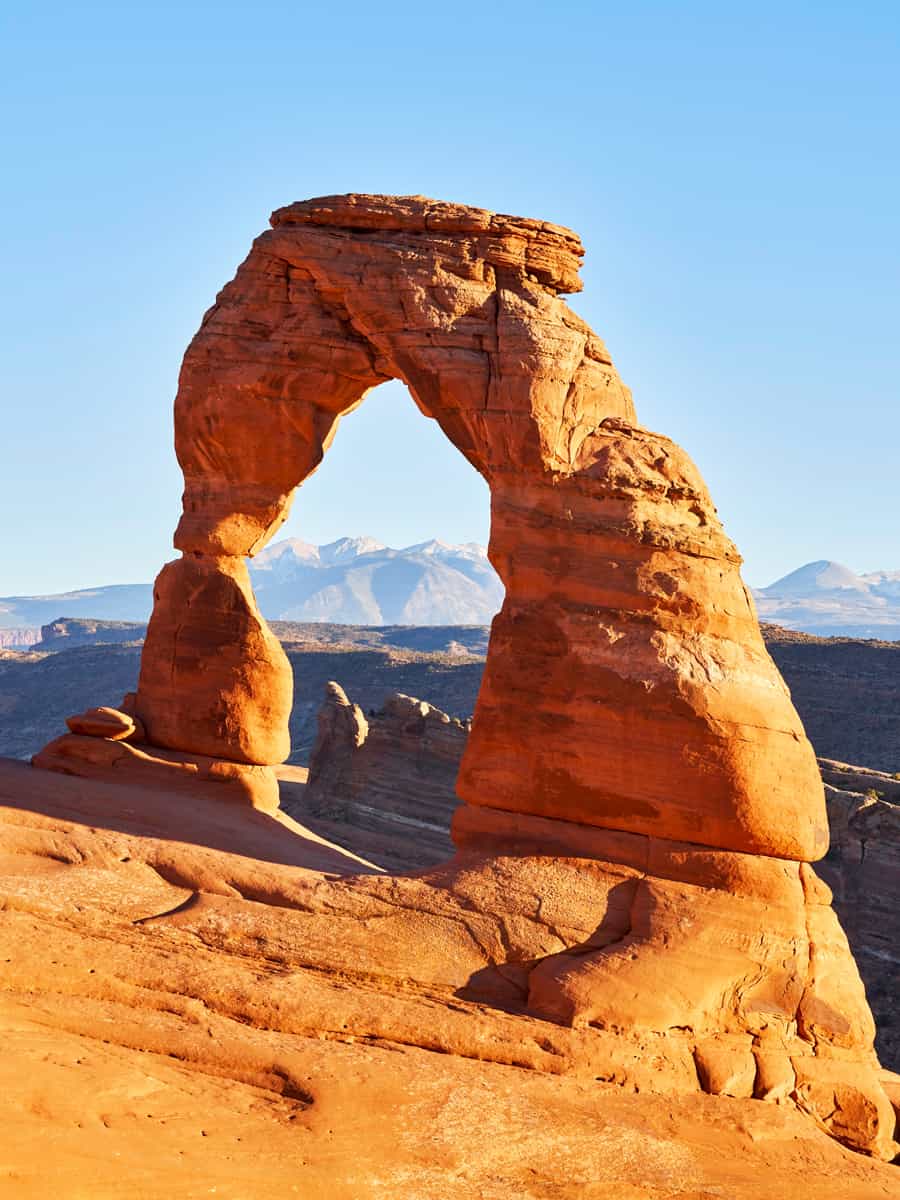
Arguably the most iconic symbol of Utah, Delicate Arch stands alone, framing the rolling La Sal Mountains in the distance. The trail to Delicate Arch is a 3-mile round trip with a moderate to strenuous difficulty rating.
It involves a significant elevation gain and walking on slickrock with little shade. For those unable to hike to the arch, lower and upper viewpoint areas offer distant views, with the lower viewpoint being accessible via a short, easy trail.
The best time to photograph the arch is at sunset when it glows a fiery red against the twilight sky.
Landscape Arch
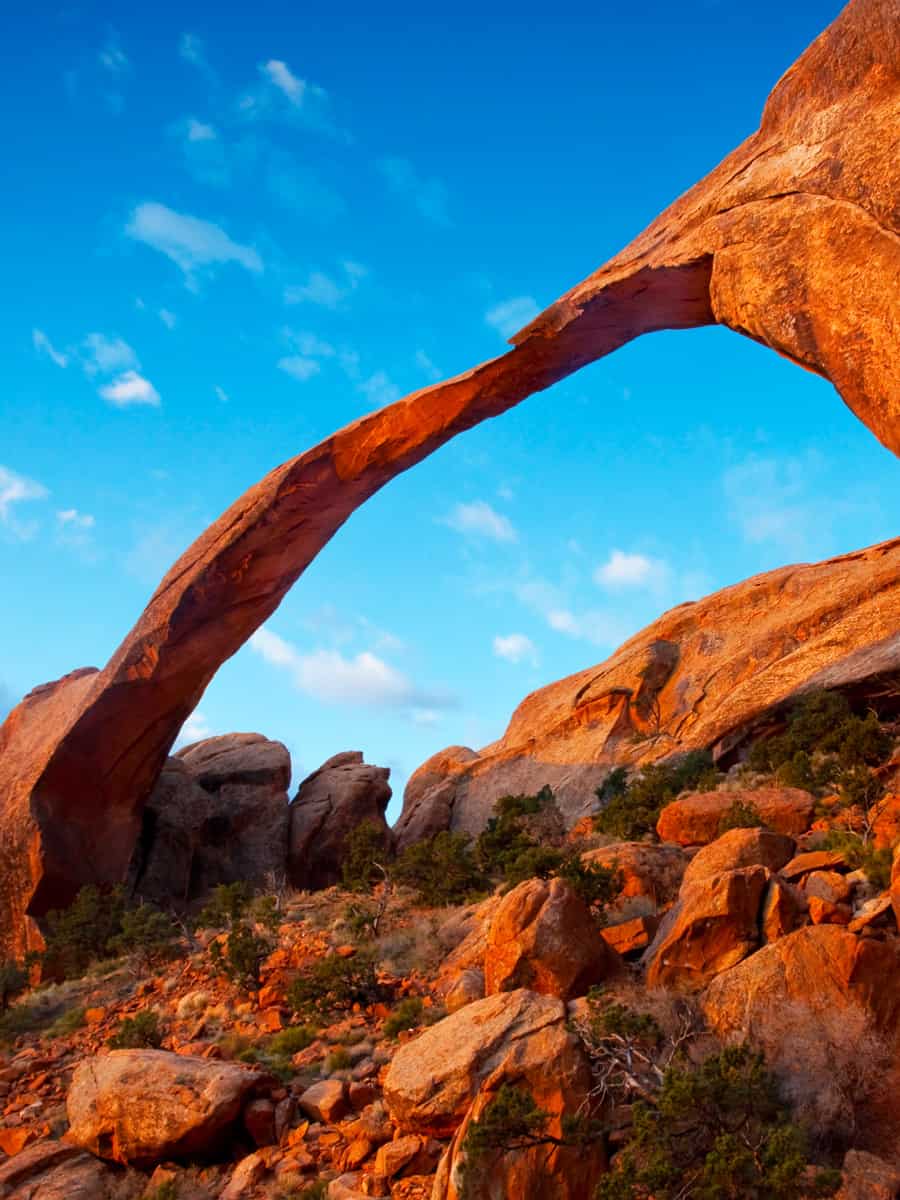
Within the Devils Garden area lies Landscape Arch, a stunningly slender and long arch, one of the largest in the world. The trail to Landscape Arch is relatively flat and easy, stretching 1.6 miles round trip, making it accessible to most visitors.
If you want more adventure, the trail continues past Landscape Arch, leading to several more secluded arches and formations. This extended trail becomes more challenging and requires scrambling over rocks and navigating narrow ledges.
Double Arch
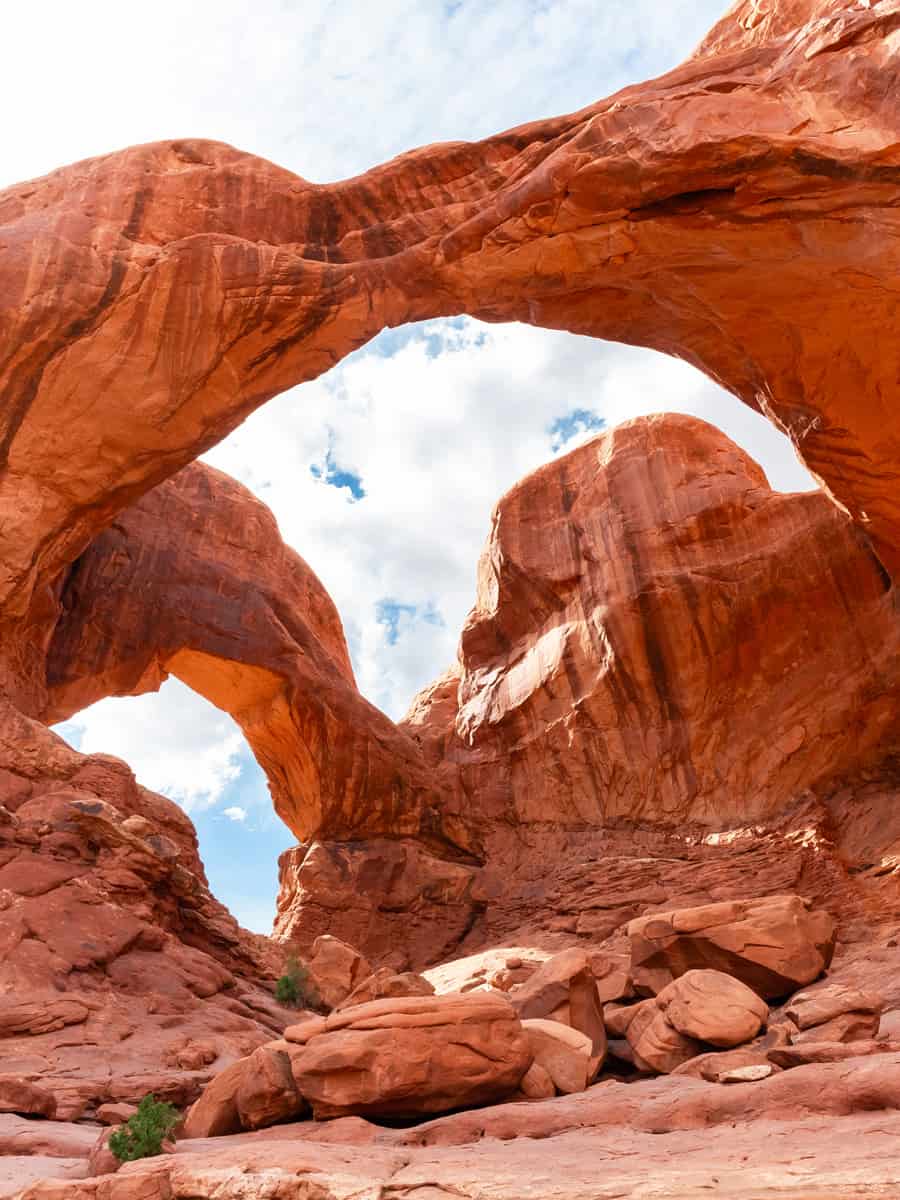
Double Arch is a breathtaking formation consisting of two giant arches that share a foundation stone, creating a unique and photogenic scene. The trail to Double Arch is an easy, 0.5-mile round trip walk, suitable for families and visitors of all ages.
The area around Double Arch offers plenty of space for exploration and relaxation, making it a perfect spot for picnics and leisurely visits.
Fiery Furnace
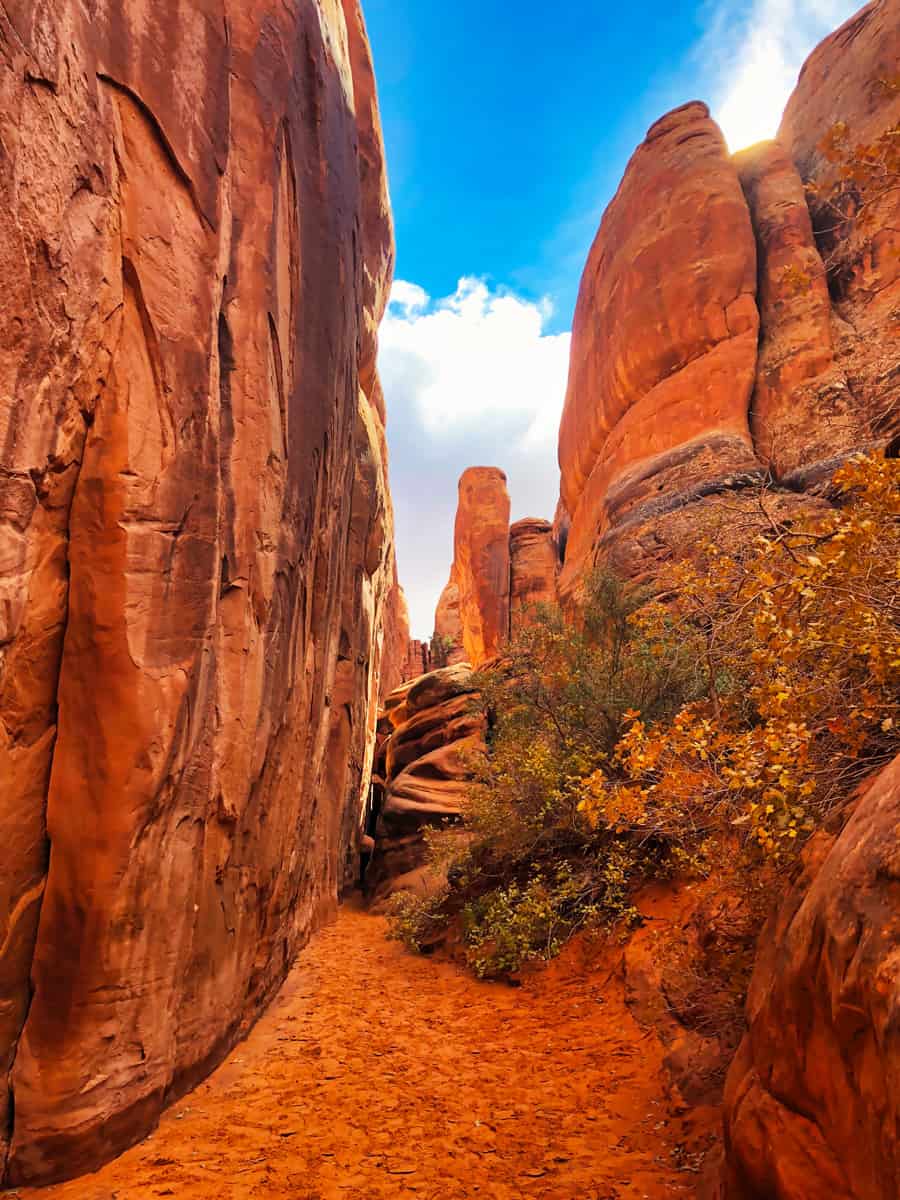
The Fiery Furnace is a labyrinth of narrow sandstone canyons and fins. Due to its complex nature, hiking in the Fiery Furnace is recommended only with a ranger-led tour or after obtaining a permit for individual exploration.
This hike is moderately difficult, requiring navigation skills and the ability to move through tight spaces. Ranger-led tours provide a fascinating insight into the area's geology, ecology, and history, making it a highly educational and adventurous experience.
Reservations for the tours are highly recommended and can be made through the official National Park Service reservation system.
Devils Garden Trail
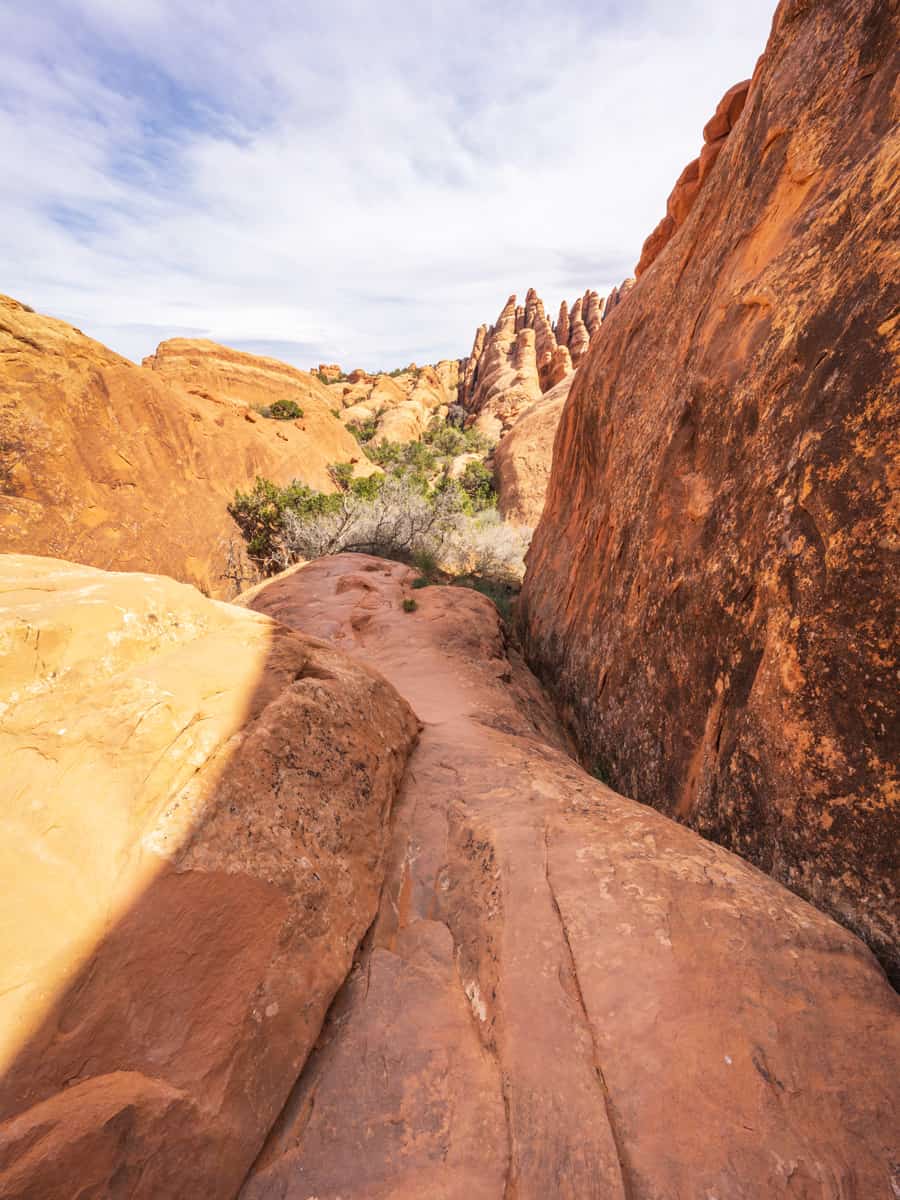
For a full day's adventure, the Devils Garden Trail offers an 8-mile loop with eight arches, with Landscape Arch just the beginning.
This hike ranges from easy to challenging, significantly beyond Landscape Arch, where the trail becomes less defined and requires scrambling over rocks.
The Primitive Loop, part of the Devils Garden Trail, offers solitude and more challenging terrain for experienced hikers. Each trail provides a unique perspective on the park's vast natural wonders.
Remember to carry water, wear appropriate footwear, and check the weather. Trail conditions and accessibility can vary with the seasons, and summer temperatures can reach over 100°F.
For the latest trail information and safety tips and to plan your visit, refer to the Arches National Park official website.
2. Try Stargazing
Arches National Park is a haven for stargazers. Its remote location away from city lights creates conditions perfect for observing the Milky Way, constellations, and celestial events like meteor showers.
The park's commitment to preserving its dark skies enhances the visibility of these night-time wonders.
Visitors are encouraged to participate in ranger-led stargazing programs, which are held regularly and provide telescopes and expert knowledge about the cosmos.
Remember to bring a blanket and a thermos of your favorite warm beverage for a cozy experience under the stars.
3. Join Photography Workshops
The dramatic landscapes of Arches National Park, with its red rock formations against the backdrop of blue skies or star-filled nights, offer photographers a dynamic canvas.
You can join photography workshops like this one, which have a moderate difficulty level.
If you plan to organize your photography workshop, learn about the permits and requirements you may need here: Arches Still Photography & Art Instruction Conditions.
The Arches National Park website also provides a list of the best places to take photos within the park, in the early morning and late afternoon, so do check that out as well.
4. Enjoy Rock Climbing and Canyoneering
Rock climbing and canyoneering present thrilling options for those looking for a physical challenge and a different perspective on the park.
While these activities are permitted in designated areas, they sometimes require adherence to park regulations and licenses. Read about the rock climbing permits and canyoneering permits here.
Climbers and canyoneers must follow Leave No Trace principles to minimize their impact on the park's delicate desert ecosystem. It's essential to check the latest park guidelines and possibly hire a local guide if you're new to the sport or the area.
5. Spot Some Wildlife in Action
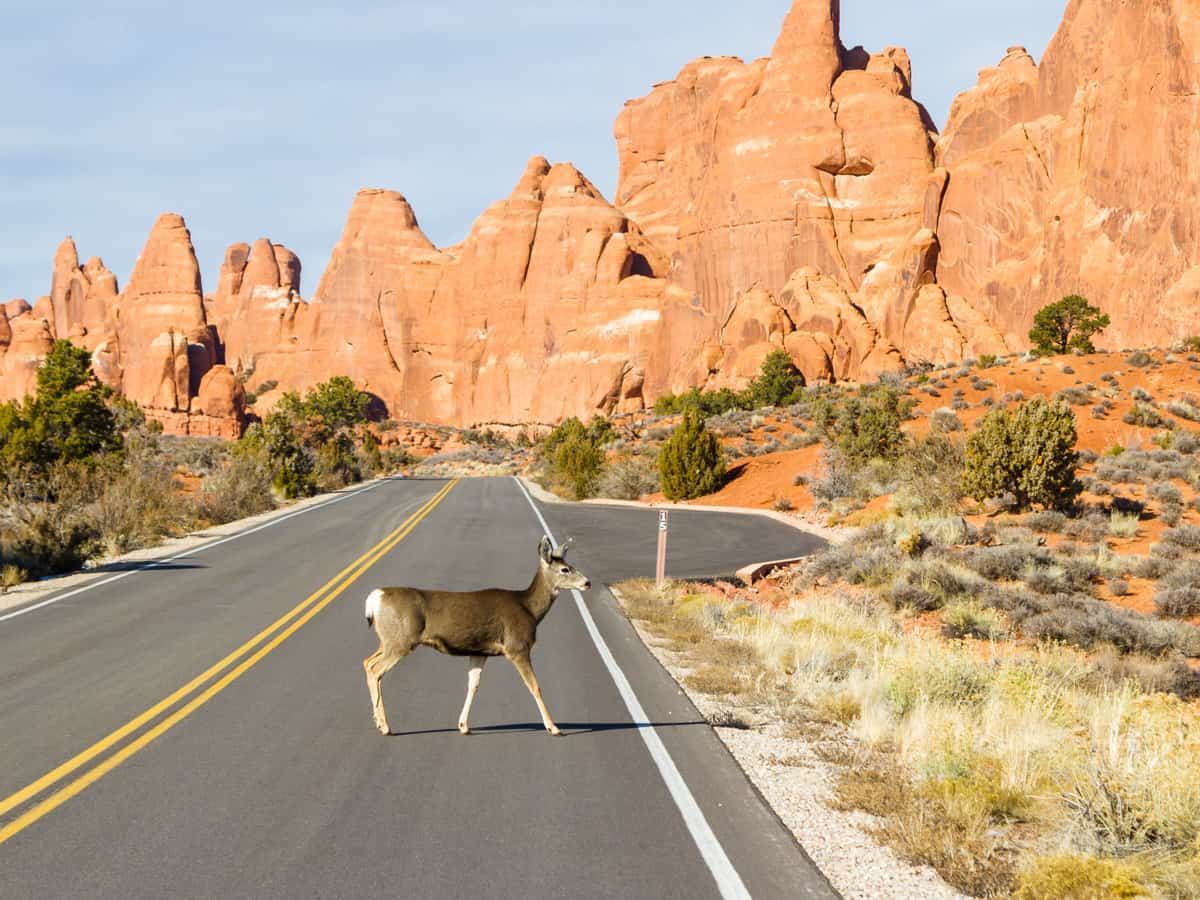
Arches National Park, celebrated for its stunning geological formations, is equally rich in biodiversity. The park's flora ranges from the iconic Joshua tree to various cacti and vibrant wildflowers that spring to life with colors under the sun.
The fauna of Arches is as varied as its flora. You might catch glimpses of mule deer in the twilight hours, desert cottontails weaving through the rocks, or bighorn sheep navigating the park's craggy cliffs.
The desert is also a haven for reptiles, including lizards and snakes, so remember to maintain a respectful distance to observe these creatures.
For bird enthusiasts, Arches National Park has over 200 bird species, from the majestic golden eagle to the diminutive black-throated sparrow and swift peregrine falcon. The cooler morning hours buzz with avian activity, providing optimal conditions for birdwatching.
Directions to Arches National Park
Most arrive by car as there's no public transportation within the park. Options include renting a car, biking, or taking a commercial tour.
The park is in southeast Utah, 5 miles north of Moab, Utah, 110 miles southwest of Grand Junction, Colorado, 236 miles southeast of Salt Lake City, Utah, and 360 miles southwest of Denver, Colorado.
- By Car: Enter the park north of Moab via US 191 from Moab or 22 miles south on US 191 from Interstate 70 at Crescent Junction.
- By Plane: Accessible airports include Canyonlands Field (CNY) (11 miles), Grand Junction Regional Airport (GJT) (109 miles), and Salt Lake City International Airport (SLC) (230 miles) from the park entrance.
- By Train: Amtrak's California Zephyr stops at Green River, Utah (45 miles), and Grand Junction, Colorado (109 miles) from the park entrance.
- By Bus: Greyhound serves Green River, Utah, and Grand Junction, Colorado. Commercial bus drivers should review Tour Bus Information before arrival.
- By Shuttle or Taxi: Commercial van services and taxis operate between Grand Junction, Green River, Moab, and other destinations.
- Area Transportation Options: Discovermoab.com provides additional information on transportation options in and around Moab.
Most visitors travel by vehicle along the scenic drive, accessing viewpoints and trailheads. During your visit, be aware of busy times, full parking lots, and potential road construction delays or closures. Check the NPS Directions page for more information.
While you're in Utah, you may want to check out our road trip guide: The Ultimate Utah National Parks Road Trip
Best Time to Visit
Arches National Park is open year-round, but the best times to visit are spring (April to May) and fall (September to October), when temperatures moderate, making outdoor activities more enjoyable.
Summer months see higher temperatures exceeding 100°F, while winter may bring icy yet captivating snowy conditions, particularly from November through February — like these national parks in our list: 15 Breathtaking Winterland National Parks in the West for a Magical Snowy Adventure
Accessibility at Arches National Park
Accessibility at Arches National Park caters to various needs, offering paved scenic roads for easy exploration of the red-rock wonders, including famous arches and rock formations.
Visitor center exhibits feature audio recordings, tactile models, maps, and rock samples. Audio tours of the scenic road are available for purchase or rent, and large-print and braille publications can be requested.
Short, accessible trails and viewpoints provide closer experiences, while longer trails lead to more iconic sites. US citizens or permanent residents with permanent disabilities can qualify for the Interagency Access Pass, granting free or discounted admission to federal recreation sites.
Service animals are welcome throughout the park, but owners are urged to identify them to prevent complaints. Caution is advised regarding the dangers of the desert to pets and service animals. You can read more about it here.
Safety Tips to Remember
When exploring Arches National Park, preparing for desert conditions is crucial. Visitors should carry at least one gallon of water per person daily, wear sun protection, and dress in layers to adapt to changing temperatures.
Staying on designated trails helps protect the park's fragile ecosystem and ensures visitor safety. Knowing about potential hazards, such as flash floods and slick rock areas, is also essential. For more safety tips and guidelines, consult the National Park Service website.
In Arches, An Unforgettable Adventure Awaits You
As you finish planning your magical journey through the rock formations of Arches, remember that this landscape has inspired wonder for centuries.
Pack your bags, grab your loved ones, and witness the power of wind and water at work. An unforgettable adventure awaits you in Arches!
